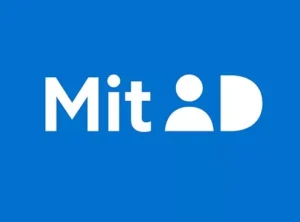In Denmark we have several company structures to choice between. The decision of which one that fits you best depend on several factors such as, future plans, company activities, the need of upcoming investments etc. In the following, the characteristics of each company form, structures, special rules you must be aware of and other relevant matters are described.
These company structures are the most used and usual ones:
- Enkeltmandsvirksomhed (Sole proprietorship)
- Anpartsselskab (ApS) (Limited liability company)
- Aktieselskab (A/S) (Joint-stock company)
| Company Structures | Minimum Share Capital | Require an executive board | Personal liability | Amounts of owners |
| Enkeltmandsvirksomhed | DKK 0,00 | No | Yes | 1 |
| Anpartsselskab (ApS) | DKK 40,000 | No | No | +1 owner |
| Aktieselskab (A/S) | DKK 400,000 | Yes | No | +1 |
Enkeltmandsvirksomhed – Sole proprietorship
A sole proprietorship is a form of business organization that is distinctive in its simplicity and direct connected to its owner. Unlike larger corporate structures, a sole proprietorship is a business owned and operated by a single individual. In this article, we will explore the unique characteristics that define a sole proprietorship and distinguish it from other business entities.
- Singular Ownership and Control
One of the defining features of a sole proprietorship is that it is wholly owned and operated by a single individual. This solitary ownership structure grants the business owner complete control and decision-making authority. Unlike partnerships or corporations, where decision-making might be shared among multiple individuals or a board of directors, the sole proprietor has the autonomy to make all business-related choices independently.
- Simplicity in Formation
Establishing a sole proprietorship is relatively straightforward compared to other business structures. The business owner simply needs to register their business with the CVR, obtain any necessary licenses, and comply with relevant regulations. The simplicity of formation makes a sole proprietorship an attractive option for entrepreneurs seeking a quick and uncomplicated start to their business endeavors.
- Direct Personal Liability
In a sole proprietorship, the business and its owner are considered a single legal entity. While this unity provides simplicity, it also means that the owner has unlimited personal liability for the business’s debts and obligations. In the event of financial challenges or legal issues, the owner’s personal assets may be at risk, making careful financial management crucial for the success and longevity of the business.
- Flexibility in Decision-Making
Sole proprietors enjoy significant flexibility in decision-making, allowing them to adapt quickly to changing circumstances. From setting prices to adjusting business strategies, the owner can make decisions promptly without the need for extensive consultations or corporate governance processes. This flexibility is advantageous in responding to market dynamics and customer needs in a timely manner.
- Limited Financial Resources
While sole proprietorships offer simplicity and flexibility, they may face limitations in terms of financial resources. The owner’s ability to raise capital may be restricted compared to larger corporate structures that can issue stocks or attract multiple investors. Consequently, sole proprietors often rely on personal savings or loans to fund their businesses, which can impact their capacity for growth and expansion.
Conclusion
In summary, a sole proprietorship stands out in the business landscape due to its singular ownership, simplicity in formation, direct personal liability, flexibility in decision-making, and limited financial resources. These characteristics make it a suitable choice for individuals seeking autonomy in their business ventures, provided they are willing to accept the associated responsibilities and potential limitations. Understanding these distinctive traits is essential for aspiring entrepreneurs considering the establishment of a sole proprietorship.
If you’re in doubt about which company structure to choose, request a call back from our partners, and find the right solution for your future and business.
Anpartsselskab (ApS) – Limited liability company
An Anpartsselskab, commonly known as an ApS, is a prevalent form of business organization in Denmark. This company structure of entity combines elements of a corporation with a more flexible structure. In this article, we will delve into the unique characteristics that define an Anpartsselskab, differentiating it from other business entities.
- Limited Liability Structure
One of the key features of an Anpartsselskab (ApS) is its limited liability structure. Shareholders in an ApS are generally not personally liable for the company’s debts beyond their initial capital contribution. This separation between personal and corporate assets provides a level of financial protection for the shareholders, making it an attractive choice for entrepreneurs seeking to mitigate personal risk.
- Shareholder Ownership and Control
An Anpartsselskab (ApS) is characterized by having multiple shareholders, each owning a certain percentage of the company. Unlike a sole proprietorship, where there is a single owner, an ApS allows for the distribution of ownership among individuals or legal entities (companies). While this can lead to shared decision-making, the day-to-day operations and strategic direction are often determined by the appointed management or board of directors.
- Formation Complexity
Compared to a sole proprietorship, the formation of an Anpartsselskab (ApS) involves more formalities. The process includes drafting articles of association, appointing directors, and adhering to regulatory requirements. While it requires more effort and documentation, this formal structure can offer a stable foundation for business operations and facilitate the attraction of external investments.
- Transferable Ownership
Shares in an Anpartsselskab (ApS) are transferable, allowing for changes in ownership without disrupting the company’s operations. This transferability provides flexibility for shareholders to buy or sell their ownership stakes, potentially attracting new investors or accommodating changes in the business structure over time.
- Capital Flexibility
An Anpartsselskab (ApS) has flexibility in terms of its share capital requirements. The minimum share capital is DKK 40,000, enabling entrepreneurs to establish a business with a reasonable initial investment. This flexibility in capital requirements makes the Anpartsselskab structure accessible to a broad range of business ventures.
Conclusion
In conclusion, an Anpartsselskab (ApS), is distinguished by its limited liability structure, shareholder ownership and control, formation complexity, transferable ownership, and capital flexibility. Entrepreneurs in Denmark often choose this business form to balance the benefits of limited liability with the flexibility of multiple shareholders. Understanding these unique traits is crucial for those considering the establishment of an Anpartsselskab as they navigate the intricacies of corporate governance and business operations.
If you’re in doubt about which company structure to choose, request a call back from our partners, and find the right solution for your future and business.
Aktieselskab (A/S) – Joint stock company
An Aktieselskab, commonly known as an A/S, represents a widely adopted form of business organization in Denmark. This company structure of entity combines elements of corporate structure with a more sophisticated framework. In this article, we will explore the unique characteristics that define an Aktieselskab, setting it apart from other business entities.
- Public or Private Status
One of the distinctive features of an Aktieselskab (A/S) is its ability to be either publicly or privately held. Publicly traded Aktieselskab (A/S) companies can issue shares to the public through stock exchanges, allowing for broader ownership and access to capital. In contrast, privately held Aktieselskab (A/S) companies have a limited number of shareholders and do not trade their shares publicly. This flexibility in status makes Aktieselskab (A/S) a versatile choice for businesses with varying capital needs.
- Limited Liability and Share Capital
Similar to an Anpartsselskab (ApS), an Aktieselskab (A/S) provides limited liability to its shareholders. This means that shareholders are generally not personally liable for the company’s debts beyond their initial capital contribution. Additionally, an Aktieselskab (A/S) has a minimum required share capital of DKK 400,00, which is much higher than that of an Anpartsselskab (ApS). This requirement is often seen as a measure to ensure a more robust financial foundation for the business.
- Board of Directors and Management
Aktieselskab (A/S) companies have a structured corporate governance system, typically with a board of directors responsible for overseeing strategic decisions and appointing the executive management. This separation of governance and management ensures a clear hierarchy in decision-making and allows for professional management of day-to-day operations. The board of directors is elected by the shareholders, reinforcing a democratic approach to corporate leadership.
- Transferable and Tradeable Shares
Shares in an Aktieselskab (A/S) are both transferable and tradeable, providing liquidity for shareholders. This feature allows investors to buy and sell shares on the stock exchange, contributing to the dynamic nature of ownership. The ability to trade shares publicly can enhance the visibility and valuation of the company, attracting a diverse range of investors.
- Regulatory Compliance
Formation and operation of an Aktieselskab (A/S) involve comprehensive regulatory compliance. Companies need to adhere to legal requirements, including the drafting of articles of association, appointing auditors, and meeting reporting obligations. While this entails a more rigorous process compared to simpler business structures, it ensures transparency and accountability in corporate practices.
Conclusion
In summary, an Aktieselskab, or A/S, stands out for its public or private status, limited liability structure, board of directors and management, transferable and tradeable shares, and regulatory compliance. The versatility offered by an A/S makes it an appealing choice for businesses with aspirations of growth, access to public capital markets, and a desire for a sophisticated corporate governance structure. Understanding these distinctive characteristics is essential for entrepreneurs and investors considering the establishment or engagement with an Aktieselskab.
If you’re in doubt about which company structure to choose, request a call back from our partners, and find the right solution for your future and business.



